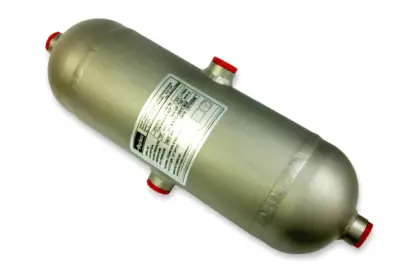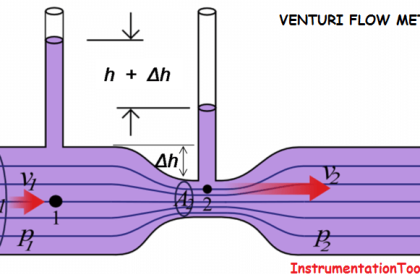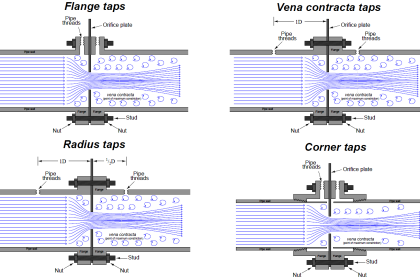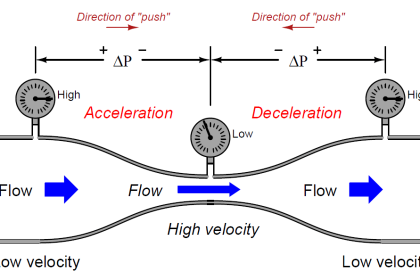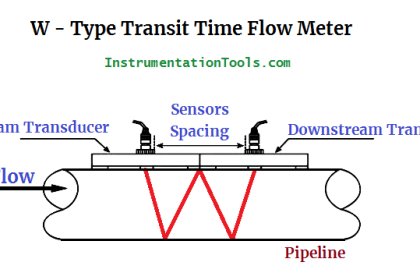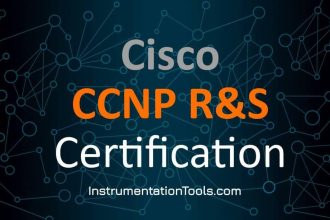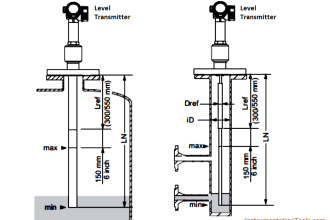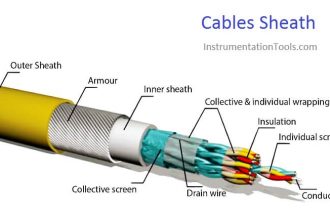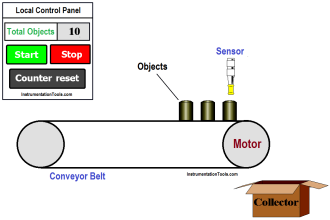A combination of a Venturi tube and orifice plate features the same tapering intake portion of a venturi tube but has a ‘shoulder’ similar to the orifice plate’s exit part to create a sharp pressure drop. It is usually used in applications with larger flow rates.
The Dall tube is a shortened version of a Venturi meter, with a lower pressure drop than an orifice plate. As with these flow meters, the flow rate in a Dall tube is determined by measuring the pressure drop caused by restriction in the conduit.
Dall Tube Flow Meter
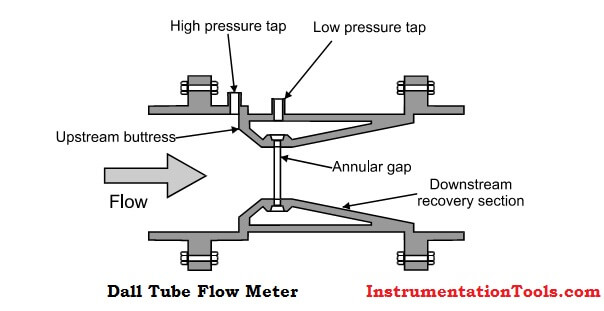
The pressure differential is typically measured using diaphragm pressure transducers with digital readout. Since these meters have significantly lower permanent pressure losses than orifice meters, Dall tubes are widely used for measuring the flow rate of large pipe works.
Differential pressure is produced by a dall tube higher than the venturi tube and nozzle, all of them having the same throat diameters.
Construction of Dall Tube Flow Meter
The Dall Flow Tube has a higher ratio of pressure developed to pressure lost than the venturi flow tube. It is more compact and is commonly used in large-flow applications.
The tube consists of a short, straight inlet section followed by an abrupt decrease in the inside diameter of the tube. This section called the inlet shoulder, is followed by the converging inlet cone and a diverging exit cone.
The two cones are separated by a slot or gap between the two cones. The low pressure is measured at the slotted throat (area between the two cones). The high pressure is measured at the upstream edge of the inlet shoulder.
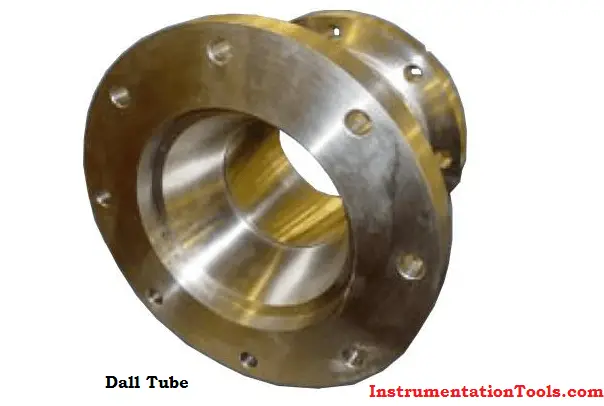
The dall flow tube is available in medium to very large sizes. In large sizes, the cost is normally less than that of a venturi flow tube. This type of flow tube has a pressure loss of about 5%. Flow rate and pressure drop are related as shown in Equation
V = k√DP
where
V = volumetric flow rate
K = constant derived from the mechanical parameters of the primary elements
DP = differential pressure
Advantages of Dall Tube Flow Meter
- The Dall Flow Tube has a higher ratio of pressure developed to pressure lost than the venturi flow tube.
- It is more compact and is commonly used in large-flow applications.
- Overall energy loss in terms of percentage of the Dall meter is about half that for a Venturi meter for a similar differential pressure loss.
- Very low permanent pressure drop – energy savings
- Easy to install – short overall lengths
- Accurate flow metering of clean gases, liquid and steam
- Negligible wear and erosion therefore require less maintenance/inspection
Disadvantages of Dall Tube Flow Meter
- More complex to manufacture.
- Sensitive to turbulence.
Applications of Dall Tube Flow Meter
- Flow measurement in gas transmission pipelines
- Flow metering of clean gasses
- Single-phase flow measurement of hydrocarbon gas
- Flow measurement in circular pipes
If you liked this article, then please subscribe to our YouTube Channel for Instrumentation, Electrical, PLC, and SCADA video tutorials.
You can also follow us on Facebook and Twitter to receive daily updates.
Read Next:
- Flow Meter Square Root
- Different Types of Flow Elements
- Segmental Wedge Flow Meter
- DP Transmitter Interface Level
- Control Valve Flow Characteristic


